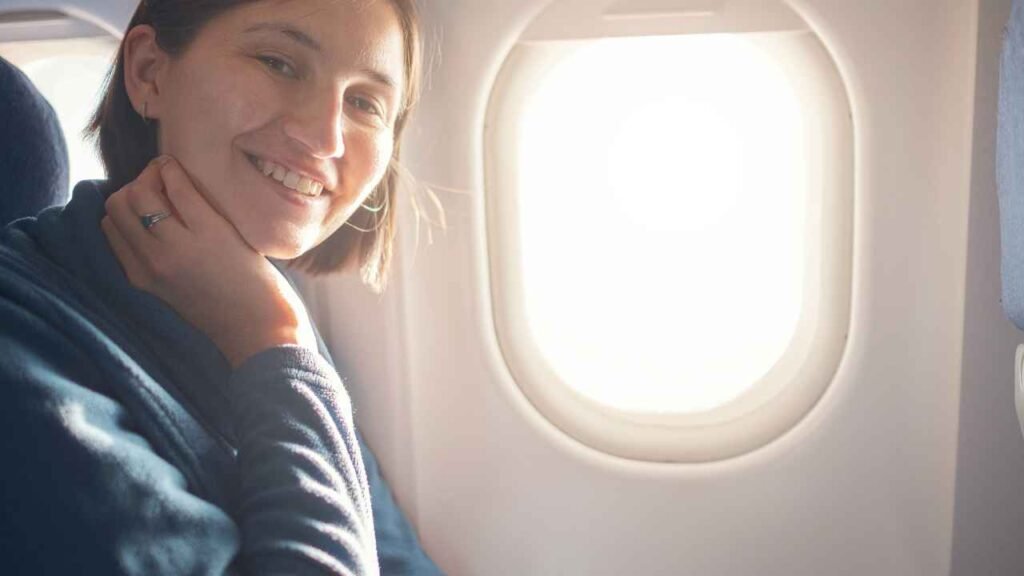Flying puts stress on your entire body, including your skin. The humidity on a plane drops to around 20%, far lower than the standard 40–60% we experience daily. This dry environment can cause skin tightness, irritation, itching, or peeling. Interestingly, the skin may also become oilier. The sebaceous glands respond to dryness by producing more oil, which can clog pores and lead to breakouts.
What Happens to Your Skin on an Airplane?
Flying puts stress on your entire body, including your skin. The humidity on a plane drops to around 20%, far lower than the standard 40–60% we experience daily.
This dry environment can cause skin tightness, irritation, itching, or peeling. Interestingly, the skin may also become oilier. The sebaceous glands respond to dryness by producing more oil, which can clog pores and lead to breakouts.
How to Care for Your Skin During a Flight
Pre-flight skincare at home is sufficient for short flights (4–6 hours). Apply a hydrating mask and follow with a nourishing cream.
For longer flights, proper cleansing and layering of skincare products are essential. Recommended in-flight skincare routine:
- Wash hands thoroughly.
- Remove makeup using micellar water.
- Wipe your face with a cotton pad soaked in clean water.
- Apply toner, serum, and moisturizer.
5 Essential Beauty Rules During a Flight
1 – Don’t touch your face.
Airplane surfaces harbor germs. Touching your face increases the risk of irritation and breakouts.
2 – Avoid makeup.
Skip decorative cosmetics to let your skin breathe and prevent pore clogging.
3 – Stay Hydrated.
Drink plenty of water, as hydration benefits your skin and overall health.
4 – Avoid alcohol.
Alcohol removes water from the body, and this problem only gets worse during a flight, so it is highly undesirable to drink alcoholic beverages on an airplane.
5 – Moisturize Your Hands
Hands also suffer from dryness on planes. Keep them hydrated with nourishing hand cream.
Can I use Thermal Water and Cloth Masks During a Flight?
It may seem like nothing better than a refreshing thermal water mist or spray during a flight. But in reality, not all products are suitable for use.
“Most often, they contain salts. And salts, in turn, when they come into contact with the skin, begin to draw moisture from the surface, which only exacerbates the feeling of dryness and tightness.
Moreover, we shouldn’t forget that during a flight, not everyone follows the proper cleansing steps before applying such a product. If you do use a liquid spray mid-flight, it’s important to blot your face with a tissue afterward to remove any remaining liquid.
As for using sheet masks during a flight, our experts agree that it is possible, but with some caveats. For example, Irina Aksenko advises first to “make sure the mask doesn’t contain any additional substances that could irritate the skin.
It’s crucial to thoroughly cleanse the skin before applying the product. If a mask is applied to a poorly cleansed face, there’s a high risk of clogged pores and subsequent inflammation.
A sheet mask is an excellent SOS remedy for skin recovery after a flight. In that case, you can cleanse your face and apply the product with complete peace of mind.
How to Restore Your Skin After a Flight?
After a flight, giving your skin proper hydration, creams, serums, patches, and masks are all suitable options. You can also consider scheduling cosmetic treatments.
However, it’s best to avoid such procedures before a flight.
“Before flying, it’s crucial to completely avoid any aggressive treatments. These include chemical peels, laser resurfacing, and RF-lifting that involves active recovery.
After such procedures, the skin is already in a healing phase, and during the flight, it will be subjected to additional stress.
